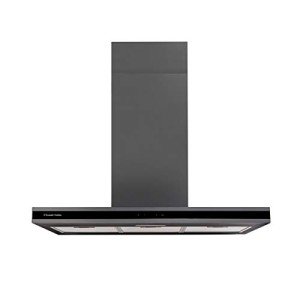Island Extractor Hoods Tools To Streamline Your Daily Life Island Extr…
페이지 정보

본문
Island Extractor Hoods: The Ultimate Guide to Choosing and Maintaining Your Kitchen's Ventilation System
In modern kitchens, an island cooking hood extractor hood is not simply a practical requirement, it likewise functions as a centerpiece that boosts the visual of the space. As open-concept living environments continue to rise in appeal, comprehending the features, benefits, and maintenance of island extractor hoods becomes vital for house owners. This short article will delve into the different aspects of island extractor hoods, assisting readers make notified decisions based on their kitchen needs.
What Are Island Extractor Hoods?
Island extractor hoods are ventilation systems developed to be mounted above kitchen islands, guaranteeing effective air filtering while blending effortlessly with the kitchen's design. Unlike conventional range hoods that are typically mounted versus a wall, island hoods are suspended from the ceiling, island extractor which offers more versatility in kitchen designs.
The primary function of an island extractor hood is to eliminate air-borne grease, smoke, steam, and odors created during cooking, therefore enhancing indoor air quality. This is especially important in open-concept homes where the kitchen is incorporated into the living space.
Advantages of Island Extractor Hoods
There are numerous benefits to installing an island extractor hood in your kitchen:
Improved Air Quality: They filter and expel pollutants, ensuring a much healthier cooking environment.
Design Flexibility: Available in different sizes, styles, and surfaces, they can complement any kitchen design.
Enhanced Lighting: Many designs come geared up with incorporated lighting, lighting up the cooking surface listed below.
Noise Reduction: Modern models are created to operate quietly, minimizing disturbances in an open-concept layout.
Improved Home Value: A well-chosen island hood can increase the aesthetic and functional appeal of a kitchen, therefore enhancing property value.
Secret Features to Consider
When selecting an island extractor hood, several features ought to be considered:
| Feature | Description |
|---|---|
| Size | Choose a hood that is comparable to or a little bigger than the cooking surface dimension. |
| Extraction Rate | Determined in CFM (cubic feet per minute), this rate suggests just how much air the hood can move. |
| Filtration Type | Choices consist of ducted (vented) and ductless (non-vented) systems, depending upon home layout and preferences. |
| Control Type | Think about user-friendly controls; options consist of mechanical buttons, touch controls, or remote controls. |
| Sound Level | Check the sone score; lower scores indicate quieter operation, essential for open areas. |
| Lighting | Search for models with integrated LED lights for improved presence while cooking. |
Installation Types
There are 3 main installation types you can pick from for island extractor hoods:
Ducted Hoods: These utilize ductwork to expel air outside the home. They are normally more efficient however require a more intricate setup procedure.
Ductless Hoods: These recirculate filtered air back into the kitchen. They are simpler to set up however might need more regular filter replacements.
Convertible Hoods: This type can be adjusted to run as either ducted or ductless, providing versatility based upon the homeowner's requirements.
FAQs About Island Extractor Hoods
What is the perfect height to install an island extractor hood?
The ideal height for installation is generally 30-36 inches above the cooking surface. Nevertheless, this could differ depending on the specific design and the user's height.
How do I clean and maintain my island extractor hood?
Regular maintenance is crucial for optimal efficiency.
- Clean the outside using a mild soap solution and a soft cloth.
- Replace or tidy filters as advised by the manufacturer.
- Guarantee the ducting system is clear of blockages if using a ducted model.
How frequently should I change the filters?
For ductless hoods, charcoal filters need to ideally be replaced every 6 to 12 months, while grease filters may require more frequent cleaning, such as every 2-4 weeks, depending on use.
Are island extractor hoods energy-efficient?
Numerous designs are developed with energy-efficient motors and LED lighting alternatives. Look for items that boast ENERGY STAR certifications or comparable rankings.
Can I install an island extractor hood myself?
While some might select to carry out the setup, it's suggested to work with a professional, especially for ducted systems, to guarantee security and correct fitting.
Maintenance Tips for Island Extractor Hoods
To guarantee longevity and performance, think about the following upkeep practices:
Regular Cleaning: Clean grease filters, baffle filters, and the exterior surface area regular monthly to prevent accumulation.
Check Ductwork: Inspect duct systems for blockages or damage every 6 months, guaranteeing optimum air flow.
Change Filters: Follow producer guidelines for changing or cleaning up filters to maintain air quality.
Monitor Performance: If you discover minimized air flow or increased noise, it might be time to seek advice from a professional for repair or maintenance.
Island extractor hoods have actually evolved substantially, providing advanced functions and abilities that not just boost kitchen performance but likewise elevate home aesthetics. By carefully thinking about size, filtration type, and installation choices, house owners can pick the best cooker island hood for island extractor their requirements. Regular upkeep makes sure performance and sturdiness, making this kitchen appliance an important financial investment for any family. Whether updating an existing hood or setting up a new one, understanding these systems is crucial for accomplishing a practical and elegant kitchen environment.

- 이전글What's The Current Job Market For Single Built Oven Professionals Like? 25.05.21
- 다음글5 Laws Anyone Working In Oven Hobs Should Know 25.05.21
댓글목록
등록된 댓글이 없습니다.